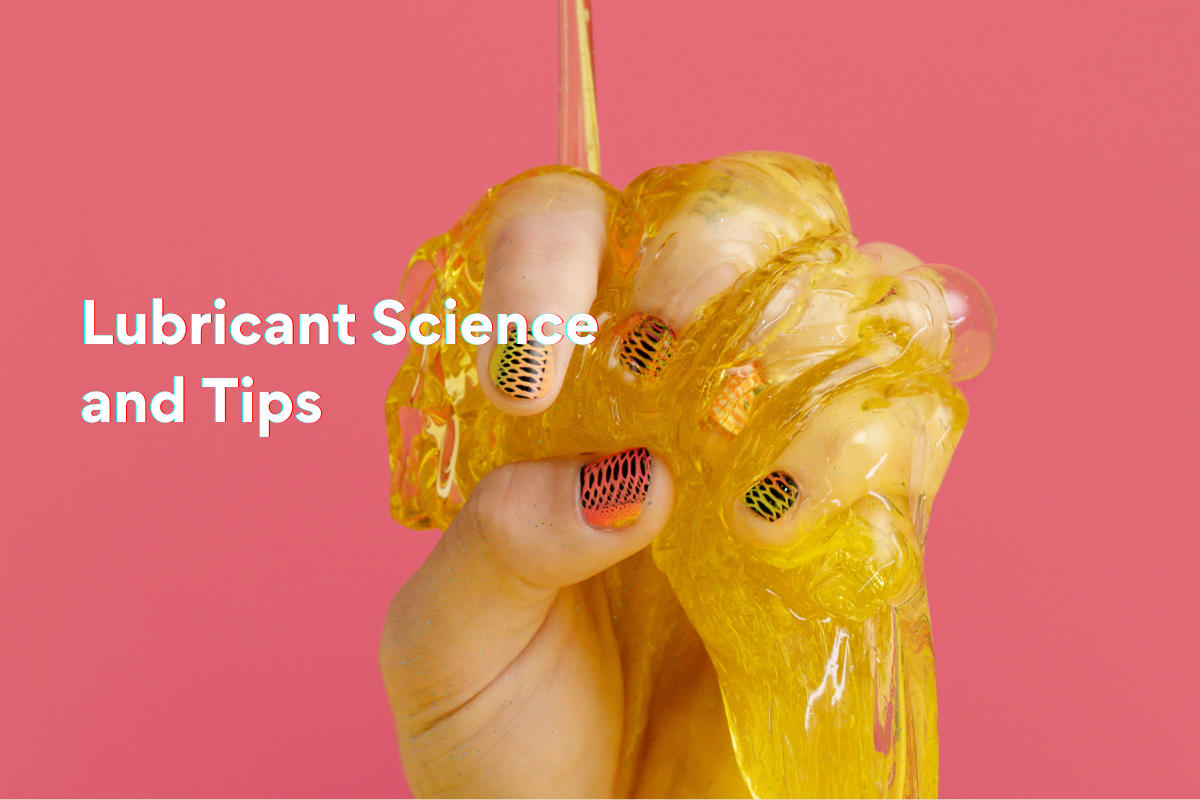
Can Lube Throw Your pH Balance Off? A Complete Guide to Keeping Things… Well-Balanced
The vaginal pH balance is a measure of how acidic or alkaline your vaginal environment is, using the same scale you might remember from high school chemistry (0 being most acidic, 14 most alkaline, and 7 neutral).
A healthy vaginal pH balance usually sits between 3.8 and 4.5, which means it’s mildly acidic. This acidity isn’t random—it’s maintained by beneficial bacteria called Lactobacillus, which act like microscopic bouncers, preventing harmful bacteria and yeast from taking over.
Why is this important? Because an optimal vaginal pH balance:
-
Prevents overgrowth of bad bacteria
-
Reduces the risk of infections like bacterial vaginosis (BV) and yeast infections
-
Keeps natural lubrication in check
-
Supports overall comfort and odour control
Think of it like a self-cleaning ecosystem. Throw it off, and things can get… interesting, in the wrong way.
Symptoms of Unbalanced pH Levels
If your pH balance is off, your body will often drop hints. The most common symptoms of unbalanced pH levelsinclude:
-
Unusual vaginal odour (often described as fishy or metallic)
-
Increased or altered discharge (thicker, thinner, or a different colour than usual)
-
Itching or irritation
-
Burning sensation during urination
-
Increased susceptibility to infections like BV or yeast infections
Small, temporary shifts in pH can happen from things like menstruation, sex, or even a new soap, but persistent symptoms are a sign your ecosystem needs some attention.
Can Lube Throw Your pH Balance Off?
Short answer: yes, it can. Long answer: it depends on the type of lube you use.
Some lubricants are formulated without considering the delicate acidity of the vaginal environment. Here’s why lube can impact your vaginal pH balance:
-
pH Mismatch
The healthiest lubes match the natural vaginal pH (around 4). If your lube is more alkaline, it can temporarily raise your pH balance off its natural range. -
Osmolality Issues
This refers to the concentration of particles in the lube. A high osmolality can pull water from your cells, leading to dryness and irritation—conditions where harmful bacteria can thrive. -
Ingredients That Disrupt
Some lubes contain glycerin, parabens, or harsh preservatives. Glycerin, for example, can feed yeast, making yeast infections more likely. -
Scented or Flavoured Varieties
While novelty lubes might sound fun, fragrances can irritate and alter vaginal flora.
It’s not about swearing off lube forever—it’s about choosing one that’s designed with vaginal health in mind.
How to Fix pH Balance
If you suspect your pH balance is off after using lube or for any other reason, don’t panic—your body is resilient. Here’s how to fix pH balance naturally and effectively:
-
Switch to a pH-friendly lubricant (ideally water-based, unscented, and pH-balanced to 4–4.5)
-
Avoid harsh soaps and douches (your vagina cleans itself)
-
Wear breathable underwear (cotton is your friend)
-
Eat probiotic-rich foods like yoghurt, kefir, or sauerkraut—or take probiotic supplements with Lactobacillus strains
-
Stay hydrated to support natural lubrication
-
Consider boric acid suppositories (with medical guidance) for recurring imbalances
-
See a healthcare provider if symptoms persist for more than a few days
Can a Man Throw Off a Woman’s pH Balance?
Yes—can a man throw off a woman's pH balance is not just a clickbait question, it’s a scientifically valid concern.
Here’s why:
-
Semen is Alkaline
While the vagina is mildly acidic, semen’s pH is between 7.1 and 8. This means intercourse without barrier protection can temporarily raise vaginal pH. -
Bacterial Transfer
Everyone has their own microbiome (the community of microorganisms living on and in the body). Sexual contact can introduce new bacteria into the vaginal environment, sometimes leading to imbalance. -
Frequency of Intercourse
More frequent unprotected sex can lead to more prolonged pH changes.
It’s not about avoiding intimacy—it’s about knowing what’s happening and taking steps to restore balance if needed.
Tips to Prevent Imbalance During Sexual Intercourse
-
Choose pH-balanced lubricants
Look for a pH between 3.8–4.5 and check for “osmolality-safe” on the label. -
Use condoms
They not only protect against STIs but also prevent semen from altering vaginal pH. -
Urinate after sex
Helps flush out bacteria from the urinary tract. -
Wash gently
Avoid scented soaps; use plain water or a mild, pH-friendly wash. -
Replenish probiotics
Either through diet or vaginal probiotic suppositories. -
Give your body a break
If you’ve had frequent intercourse, a short rest period allows pH to return to baseline.
TL;DR
Can Lube Throw Your pH Balance Off? Yes, lube can throw your pH balance off, especially if it’s not pH-matched or contains irritating ingredients. A healthy vaginal pH balance is acidic (3.8–4.5) and keeps harmful bacteria in check. Using pH-friendly lubricants, practicing safe sex, and supporting your microbiome are the best ways to maintain balance.
FAQs
1. Is it okay to put lube inside your vagina?
Yes, if it’s designed for internal use, pH-balanced, and free from irritants like glycerin, parabens, and artificial fragrances. Always check the label—your microbiome will thank you.
2. What lube doesn’t mess with pH balance?
Look for:
-
Water-based lubes with a pH of 3.8–4.5
-
Aloe-based lubes (often naturally pH-balanced)
-
Silicone-based lubes (do not alter pH, but should be patch-tested for sensitivity)
Avoid those with glycerin, high osmolality, or synthetic fragrances.
3. What are the negatives of lube?
When chosen poorly, lube can:
-
Disrupt pH balance
-
Cause irritation or dryness (if osmolality is too high)
-
Increase risk of yeast infections (with glycerin-based products)
-
Trigger allergic reactions in sensitive users
If you want to enjoy intimacy without throwing your pH balance off, the takeaway is simple: choose smarter, not slipperier. Opt for products that are scientifically formulated for vaginal health—and if in doubt, remember that your body’s chemistry isn’t a science experiment you want to mess up.
Share
